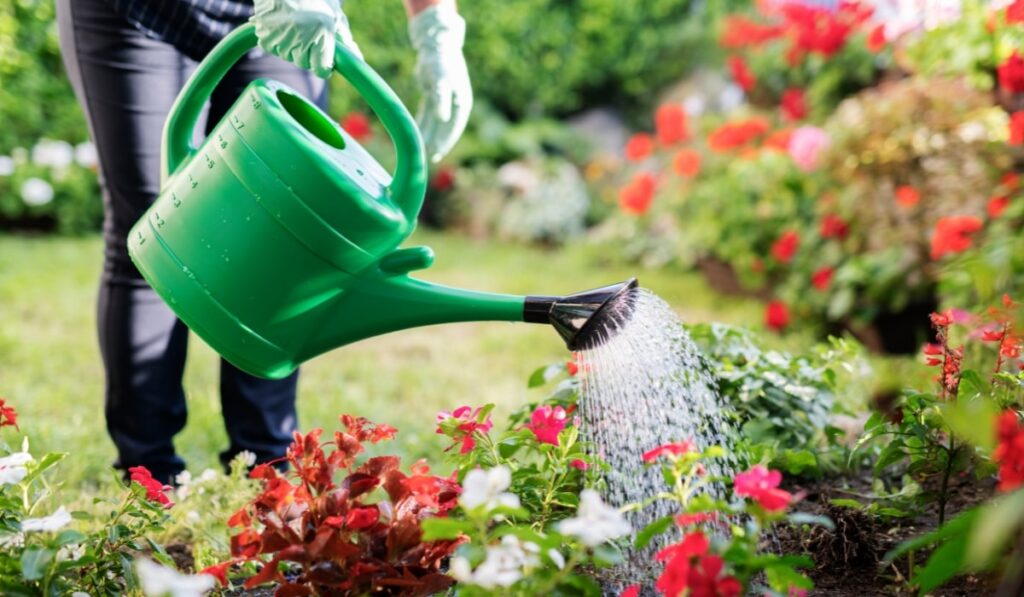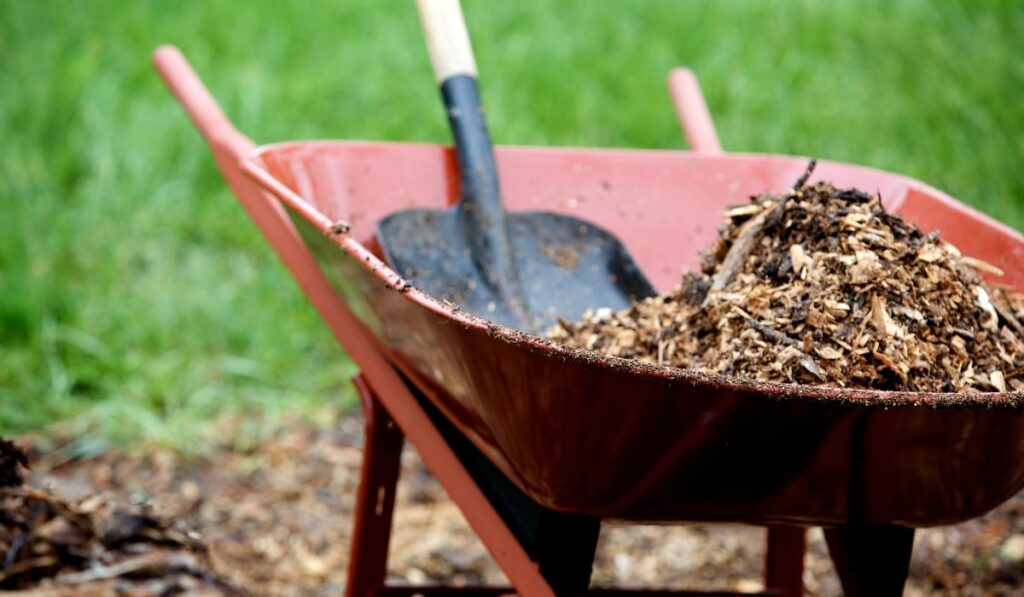Archive for Low Maintenance Garden
End-of-Year Garden Review & New Beginnings with DK Landscaping

As the year draws to a close, it’s a natural time for reflection and planning. At DK Landscaping, we encourage you to take a moment to review your garden’s journey over the past year and look ahead to exciting new possibilities in the coming year. December offers a unique opportunity to assess what thrived, what struggled, and what changes you might want to make to create your dream California landscape.
Reflecting on Your Garden’s Year
- What Were the Highlights? Think back to the moments of joy your garden brought you. Were there specific plants that bloomed beautifully? Did you enjoy spending more time in a particular area? Identify these successes to build upon them.
- What Were the Challenges? Consider any challenges your garden faced, such as pest problems, water issues, or plants that didn’t perform as expected. Understanding these challenges will help you make informed decisions for the future.
- What Did You Learn? Every season in the garden teaches us something new. Did you discover a new favorite plant? Did you learn a better watering technique? Take note of these lessons.
December: A Time for Assessment and Planning
- Take a Garden Walk: Spend some time walking through your landscape, observing its current state. Note areas that might need attention in the coming months.
- Soil Testing: If you haven’t done so recently, consider performing a soil test. This will give you valuable insights into your soil’s nutrient levels and pH, helping you make informed decisions about fertilization in the spring.
- Sketch Out Ideas: Grab a notebook and sketch out any ideas you have for changes or additions to your landscape in the new year. This could include new planting beds, hardscape features, or changes in plant selections.
- Browse Inspiration: Look through gardening magazines, websites, and social media for inspiration and new ideas that resonate with your style and local climate.
Preparing for a Fresh Start
- Tool Maintenance: Now is a great time to clean, sharpen, and organize your gardening tools. Being prepared with well-maintained equipment will make spring tasks much easier.
- Seed Catalogs & Plant Research: Start browsing seed catalogs and researching new plants you might want to incorporate into your garden next year. Consider factors like sunlight requirements, water needs, and bloom times.
- Plan Your Spring Projects: If you have larger landscaping projects in mind, such as installing a new patio or renovating a planting bed, now is a good time to start planning and potentially get quotes from contractors like DK Landscaping.
Looking Ahead with DK Landscaping
As you plan for the future of your California landscape, remember that DK Landscaping is here to help. Whether you need assistance with design, installation, maintenance, or simply want expert advice, our team is dedicated to bringing your garden dreams to life.
Let us partner with you to make the coming year your garden’s best year yet! Contact DK Landscaping to discuss your landscaping goals for the new year.
Water-Saving Tips for Your Garden

Gardening is a great way to beautify your home while also providing fresh produce. However, it can also be a significant source of water consumption. With water becoming an increasingly scarce resource, it’s important to find ways to conserve it. Water-saving tips for your garden can help you save water and reduce your water bill.
There are many ways to save water in your garden. One of the easiest ways is to choose plants that are well-suited to your climate and soil type. These plants will require less water and maintenance, saving you time and money. Another way to save water is to use mulch around your plants. Mulch helps to retain moisture in the soil, reducing the need for frequent watering.
In addition to these tips, there are many other water-saving techniques that you can use in your garden. From using drip irrigation systems to collecting rainwater, there are many ways to conserve water while still maintaining a beautiful garden. By implementing these tips and techniques, you can reduce your water consumption and help to protect this valuable resource.
Efficient Watering Practices
Understanding Soil and Plant Needs
One of the most important things to consider when it comes to efficient watering practices is understanding the soil and plant needs. Different types of soil have different moisture retention properties, which means that some soils will require more water than others. For example, clay soil tends to hold onto water for longer periods of time than sandy soil, which means that plants growing in clay soil will require less frequent watering.
Additionally, it’s important to consider the type of plants that are being grown in the garden. Native plants and drought-tolerant plants are great options for conserving water in the garden, as they are adapted to the local climate and require less water to thrive. On the other hand, plants that are not well-suited to the local climate will require more water to stay healthy.
Watering Techniques and Scheduling
Another important aspect of efficient watering practices is using the right watering techniques and scheduling. For example, morning watering is generally recommended as it allows plants to absorb moisture before the heat of the day causes evaporation. Deep watering is also important, as it encourages plants to develop deep root systems that can better withstand dry spells.
It’s also important to consider the timing and frequency of watering. Overwatering can lead to fungal diseases and runoff, which can be harmful to the environment. Gardeners should aim to water their plants only when necessary, and to avoid watering during periods of rain or high humidity.
Irrigation System Efficiency
For those who use an irrigation system, it’s important to ensure that the system is as efficient as possible. This can be achieved by using water-efficient emitters, installing a rain-shutoff device, and regularly checking and maintaining the system. Irrigation system controllers can also be used to schedule watering times and ensure that water is not wasted.
In addition to these tips, gardeners can also consider using rain barrels or other rainwater harvesting systems to save water in the garden. Mulching and composting can also help to conserve water and improve soil moisture retention. By following these water-saving tips and using efficient watering practices, gardeners can help to promote sustainability and conserve water in their gardens.
Sustainable Garden Design and Maintenance
Choosing the Right Plants
Choosing the right plants for a sustainable garden is crucial. Native plants, drought-tolerant plants, succulents, and perennials are great options for water-saving gardens. These plants require less water, are adapted to the local climate, and are more resistant to pests and diseases. Yucca and verbena are examples of beautiful and low-water-use plants that can thrive in a water-saving garden.
Mulching and Ground Cover
Mulching is an effective way to reduce water usage in the garden. Organic mulch such as lawn clippings, leaves, and compost can help retain moisture in the soil, prevent weed growth, and improve soil health. Ground cover plants such as creeping thyme, clover, or sedum also help to retain moisture and reduce erosion.

Alternative Water Sources and Collection
Using alternative water sources can be a game-changer for water-saving gardens. Rainwater harvesting is a great way to collect water for the garden. Installing a rain barrel or water tank can help to store and use rainwater for irrigation. Ollas are also a great way to save water. These clay pots are buried in the soil and slowly release water to the roots of the plants, reducing water waste and promoting plant growth.
By implementing sustainable garden design and maintenance practices such as choosing the right plants, mulching and ground cover, and using alternative water sources, gardeners can create beautiful and thriving gardens while conserving water and promoting sustainability.
Frequently Asked Questions
What are effective methods for reducing water usage in your garden?
There are several effective methods for reducing water usage in your garden. One of the most effective ways is to choose plants that are native to your region and are adapted to the local climate. These plants will require less water and maintenance compared to non-native plants. Additionally, using mulch around the plants can help retain moisture in the soil, reducing the need for frequent watering.
How can you conserve water when maintaining a vegetable garden?
To conserve water when maintaining a vegetable garden, it is important to water the plants deeply but less frequently. This encourages the roots to grow deeper and access water from lower layers of soil. Additionally, using drip irrigation or a soaker hose can help deliver water directly to the roots, reducing water waste. Using a rain barrel to collect rainwater can also provide a free source of water for your garden.
What are the benefits of watering plants early in the morning for water conservation?
Watering plants early in the morning is beneficial for water conservation because the cooler temperatures and lower wind speeds help reduce evaporation. Additionally, watering in the morning allows the plants to absorb the water before the heat of the day, reducing the risk of water stress.
What personal habit changes can lead to significant water savings in garden care?
Personal habit changes that can lead to significant water savings in garden care include using a broom instead of a hose to clean patios and driveways, fixing leaks in hoses and sprinklers, and using a bucket instead of a hose to wash cars. Additionally, reducing the frequency of lawn watering and using drought-tolerant plants can help save water.
How can you utilize greywater from showers and baths for gardening purposes?
Greywater from showers and baths can be utilized for gardening purposes by diverting the water to a holding tank or directly into the garden. However, it is important to use biodegradable and non-toxic soaps and detergents to avoid harming the plants. It is also recommended to use greywater for non-edible plants only.
What are the most efficient irrigation techniques for minimizing water waste in gardens?
The most efficient irrigation techniques for minimizing water waste in gardens include drip irrigation, soaker hoses, and micro-sprinklers. These methods deliver water directly to the roots of the plants, reducing water waste due to evaporation and runoff. Additionally, using a rain sensor or a smart irrigation controller can help adjust watering schedules based on weather conditions, further reducing water waste.
Get the Best Bushes for Your Low-maintenance Garden
If you’re a busy homeowner, chances are you don’t want to add gardening chores to your overflowing plate. But you can turn your yard into a beautiful landscape bursting with color and life.
Proper planning allows you to create a stunning low-maintenance garden with colorful and evergreen bushes. These are hardy, slow-growing shrubs that require minimum pruning, saving you the hassle of frequent pruning.
Dig in and learn more about the best shrubs for your low-maintenance garden.

How to Choose the Best Shrubs for Your Home
The key to creating a low-maintenance garden is filling it with shrubbery that never grows out of control or requires constant pruning. It allows for a rewarding gardening experience that doesn’t saddle you with recurring chores.
1. Sunlight
The amount of direct sunlight your yard receives affects the growth vigor. Ideally, plants require at least six hours of direct sunlight to thrive. However, you can still create a lush and colorful yard with beautiful blooms and fabulous foliage if your yard receives 3 to 6 hours of direct sunlight. Insufficient sunlight can lead to stunted growth and weak stems and give your bushes a drab appearance.
Observe your yard on a sunny day and note the light and shade pattern. Creating a detailed light map paints an accurate picture of how much light your yard receives to help you create the perfect garden.
2. Rooting System
Root size is a priority consideration if your garden is near your house. Shrubs with extensive roots can damage your home’s foundation, sidewalk, driveway, or septic system, saddling you with expensive repairs. Shallow roots shrubs such as hydrangea, forsythia, camellia, rhododendron, plantain lilies, and boxwoods are ideal for such gardens.
3. Sunlight Preferences
It may come as a surprise, but shrubs have varying sunlight requirements. Some shrubs thrive in full sun, while others prefer partial or deep shades. Understanding sunlight preferences is crucial to planning your landscape. You can match them with the ideal location to ensure growth and survival and create a blooming garden.
4. Size
Paying attention to the height and spread of your preferred shrubbery helps eliminates landscaping problems. Shrubs fall into three broad categories—small, medium, and large.
- Small shrubs are under 3 feet tall with a spread of 1 to 4 feet.
- Medium shrubs are under 6 feet tall and spread 3 to 6 feet.
- Large shrubs grow up to 20 feet tall with a spread of 6 to 15 feet.
The Best Low Maintenance Bushes for Your Yard
These shrubs will help you create a beautiful, low-effort garden without saddling you with routine gardening chores.
Dwarf Alberta Spruce
Dwarf Alberta Spruce is a compact, evergreen shrub with a distinct pyramidal shape. The leaves are bright, green aromatic needles and are densely packed, giving the dwarf tree a tight, fuzzy look. Dwarf Albert spruce rarely grows above 13 feet and has an astonishingly slow growth rate. It only grows 2 to 4 inches yearly, so it rarely requires pruning and will probably never outgrow its designated space. It thrives in well-drained acidic soils and direct sunlight.
Knock Out Rose
Knock Out Rose is a hard flowering shrub renowned for its beautiful continuous blooms during the growing season. It showcases vibrant flowers in red, pink, and yellow colors. Despite belonging to the rose family, Knock Out Rose is notoriously easy to grow. It’s resistant to pests and diseases and self-cleans—sheds its spent flowers without requiring deadheading. It can grow up to 7 feet tall, thrives in well-drained soils, and requires at least six hours of sunlight daily.
Blue Star Juniper
Blue Star Juniper is a compact slow-growing evergreen shrub with dense, silver-blue foliage. Mature shrubbery is about 3 feet tall with a spread of about 3 feet. They feature awl-shaped needle-like leaves arranged in clusters on tiny stems resembling stars. The unique shape of these slow-growing shrubs adds beauty and appeal to any landscape. Blue Star Juniper is exceptionally hardy, requires little maintenance, and thrives in various soil conditions.
Boxwood
Boxwoods are hardy, evergreen shrubs renowned for their dense foliage, compact growth habit, and landscaping versatility. The growth height depends on the specific variety and pruning style but typically ranges from 1 to 15 feet. Dwarf cultivars tend to stay compact, growing to a maximum height of about 2 feet. Boxwood bushes are slow growing, usually about 12 inches a year, and have spread ranges from 1 to 10 feet. They produce tiny white blooms in spring, thrive in well-drained soils, and grow best in partial or full sun.
Rhododendron
Rhododendrons are a diverse group of shrubs renowned for their showy, colorful flowers. Their growth height depends on the variety and cultivar. Compact and dwarf cultivars are 1 to 3 feet tall, while large rhododendrons are usually 6 to 15 feet tall. Compact shrubs may have a spread of 2 to 4 feet, while large ones can have a spread of 6 to 10 feet. Rhododendrons thrive in coarse, acidic soils and require partial sun exposure.
Create a Thriving Low Maintenance Garden
Shrubs are ideal an ideal choice if looking to create a beautiful, low-maintenance garden. Carefully choosing the shrub varieties can help pepper your landscape with a mix of evergreen and flowering shrubs. Working with an expert service can help you make the best choices and transform your drab yard into a beautiful paradise teeming with life.
Get the best low-maintenance bushes for your garden. Contact us today!





